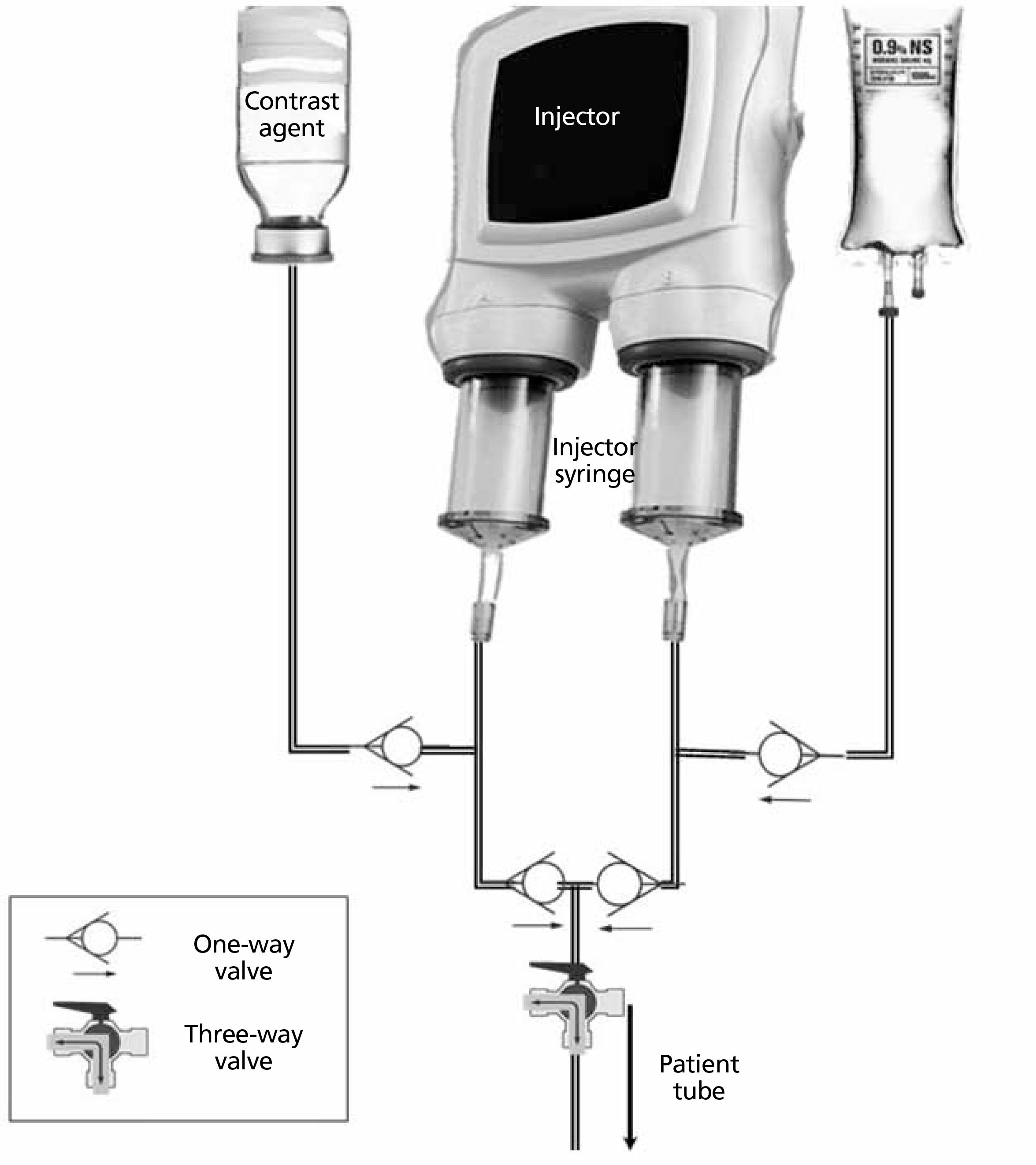 |
 |
- Search
| J Korean Med Assoc > Volume 63(3); 2020 > Article |
|
Abstract
Until now, automatic contrast agent injector syringes licensed for consecutive one-time use have been employed with a number of patients. In 2016, regulation of automatic injector syringes ensured their single use, and reuse was strictly limited by law. However, this regulation creates the social problems of rising medical costs and resource waste. Many doctors are not significantly concerned about infection from contrast agent injection because the needle and connection lines on the patient side are set up for single use, the connections between syringes and contrast agents are reusable, and there are no reports of excessive infection. However, infection can nevertheless occur with injection of contrast agents. We should therefore implement the correct and safe use of contrast agents and take precautions against infection. To prevent infection due to contrast agents, syringes and connection lines for injection of such agents should be used once per patient, or multi-use licensed products should be used. In the latter case, reverse flow prevention filters must be used on the patient's side.
Figure 1.
Schematic diagram of automatic computed tomography injection system using a dual-syringe injector with two syringes for contrast agent and saline. The syringes for contrast agent and saline are connected by a T-shaped connector. A one-way valve placed in the contrast agent part of the injection tube prevents saline from infiltrating the contrast agent syringes; the T-connector is directly connected to the patient tube. The T-shaped connector in the saline part allows for filling of saline from the saline bag. Drawn by author.

REFERENCES
1. Lee SW. Reuse of disposable syringes may result in ‘license cancellation’. Doctor's News. 2016 Nov 21;[cited 2020 Jan 31]. Available from:. http://www.doctorsnews.co.kr/news/articleView.html?idxno=113954.
2. Medical Service Act. Act No 16555 (August 27, 2019)..
3. Buerke B, Mellmann A, Stehling C, Wessling J, Heindel W, Juergens KU. Microbiologic contamination of automatic injectors at MDCT: experimental and clinical investigations. AJR Am J Roentgenol 2008;191:W283-W287.

4. Buerke B, Puesken M, Mellmann A, Seifarth H, Heindel W, Wessling J. Microbiologic contamination and time efficiency of use of automatic MDCT injectors with prefilled syringes: results of a clinical investigation. AJR Am J Roentgenol 2010;194:299-303.

5. Buerke B, Puesken M, Mellmann A, Schuelke C, Knauer A, Heindel W, Wessling J. Automatic MDCT injectors: hygiene and efficiency of disposable, prefilled, and multidosing roller pump systems in clinical routine. AJR Am J Roentgenol 2011;197:W226-W232.

6. Yoshida J, Ishimaru T, Fujimoto M, Hirata N, Matsubara N, Koyanagi N. Risk factors for central venous catheter-related bloodstream infection: a 1073-patient study. J Infect Che-mother 2008;14:399-403.

7. Lee DH, Jung KY, Choi YH. Use of maximal sterile barrier precautions and/or antimicrobial-coated catheters to reduce the risk of central venous catheter-related bloodstream infection. Infect Control Hosp Epidemiol 2008;29:947-950.
8. Maki DG, Ringer M. Risk factors for infusion-related phlebitis with small peripheral venous catheters. A randomized controlled trial. Ann Intern Med 1991;114:845-854.
9. Centre Hospitalier Universitaire de Quebec. Intravenous contrast medium administration in computerized axial tomography at the CHUQ Medical Imaging Department [Internet]. Quebec: Centre Hospitalier Universitaire de Quebec; 2007. [cited 2020 Jan 31]. Available from:. https://www.chudequebec.ca/getmedia/3b2db15c-ca36-4707-b453-6916e6c51dcf/English_01_07_substancedecontrasteVArevised_VF.aspx.
10. Korean Society of Radiology. Guidance on the use of the injector syringe for 12 hours in contrast agent for CT scan [Internet]. Seoul: Korean Society of Radiology; 2017. [cited 2020 Jan 31]. Available from:. http://www.radiology.or.kr/news/notice.html?mode=view&uid=2283&no=15&gubun=1&page=1.
- TOOLS
-
METRICS

-
Related articles in
J Korean Med Assoc -
Prevention and infection control of HIV infection and AIDS2024 March;67(3)
Treatment of diabetic foot ulcers2021 August;64(8)
Prevention of Influenza by Immunization2000 January;43(1)
Prevention of Metabolic Syndrome2005 December;48(12)
Treatment and Prevention of Opportunistic Infections in HIV-Infected Patients2007 April;50(4)





